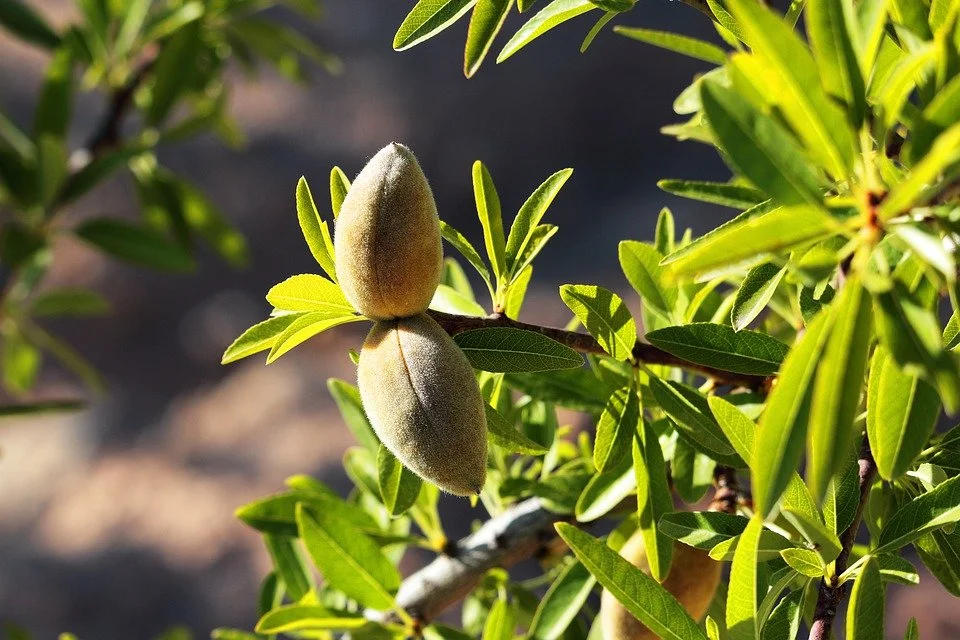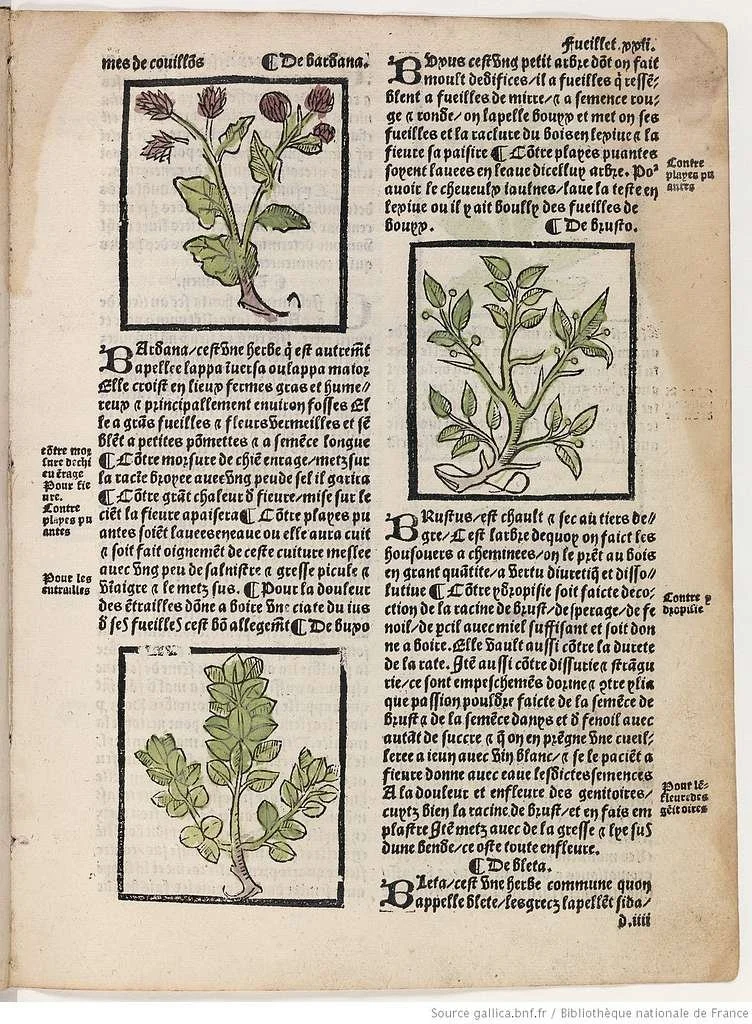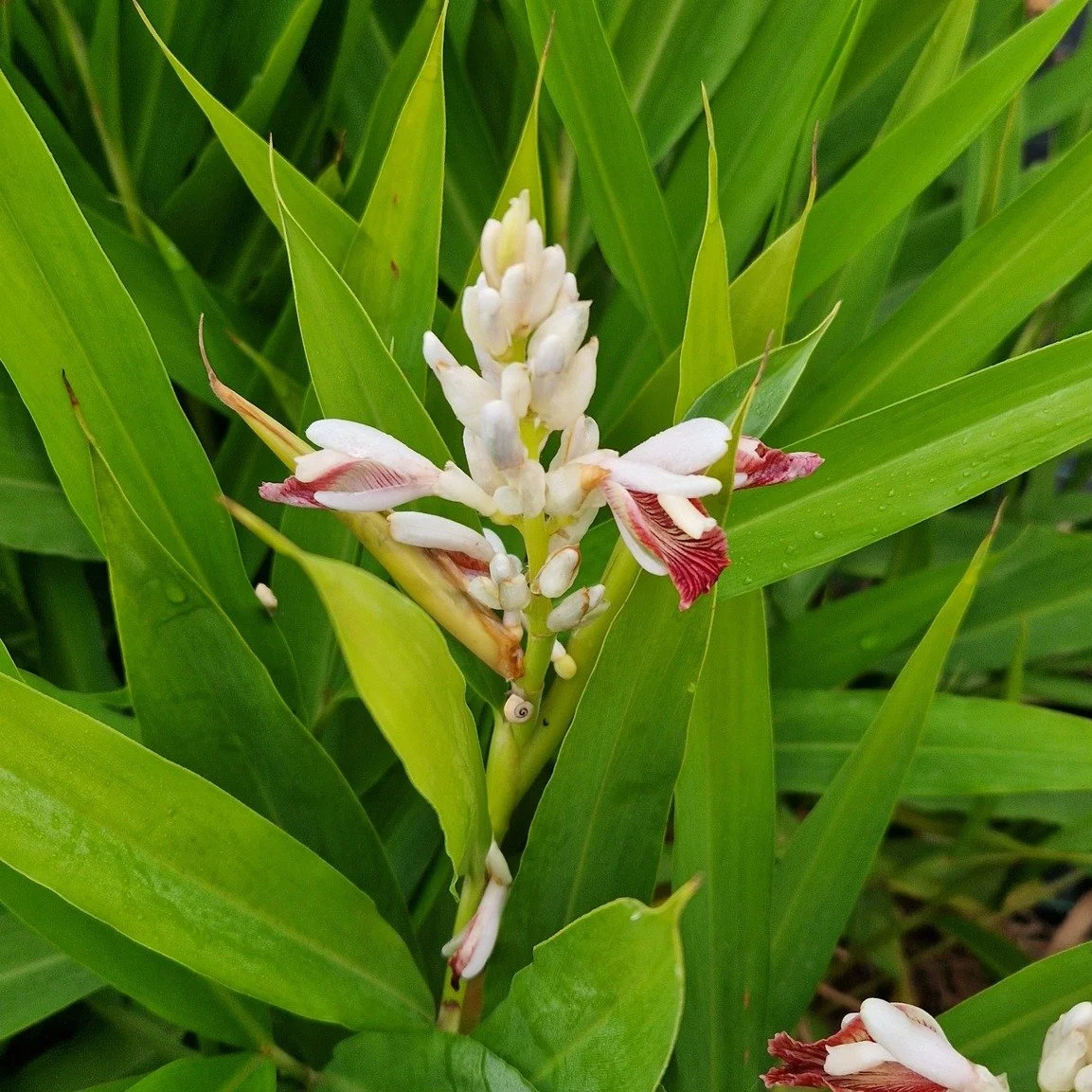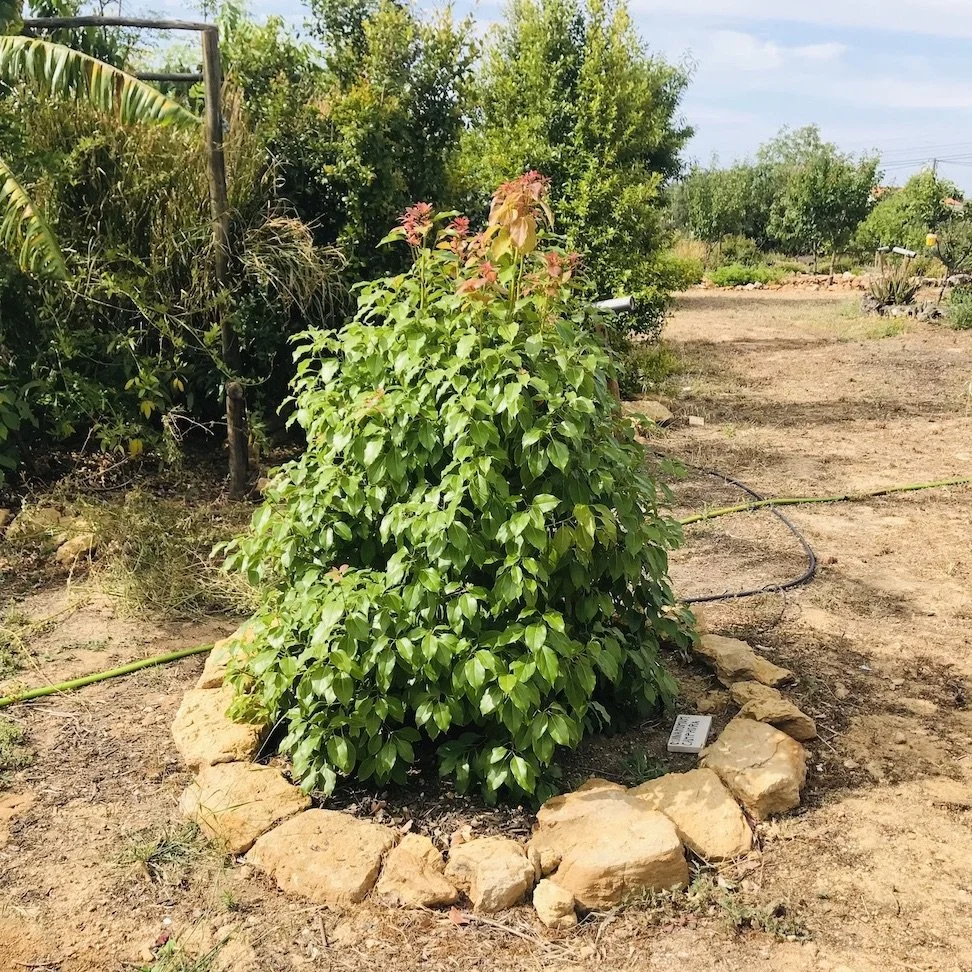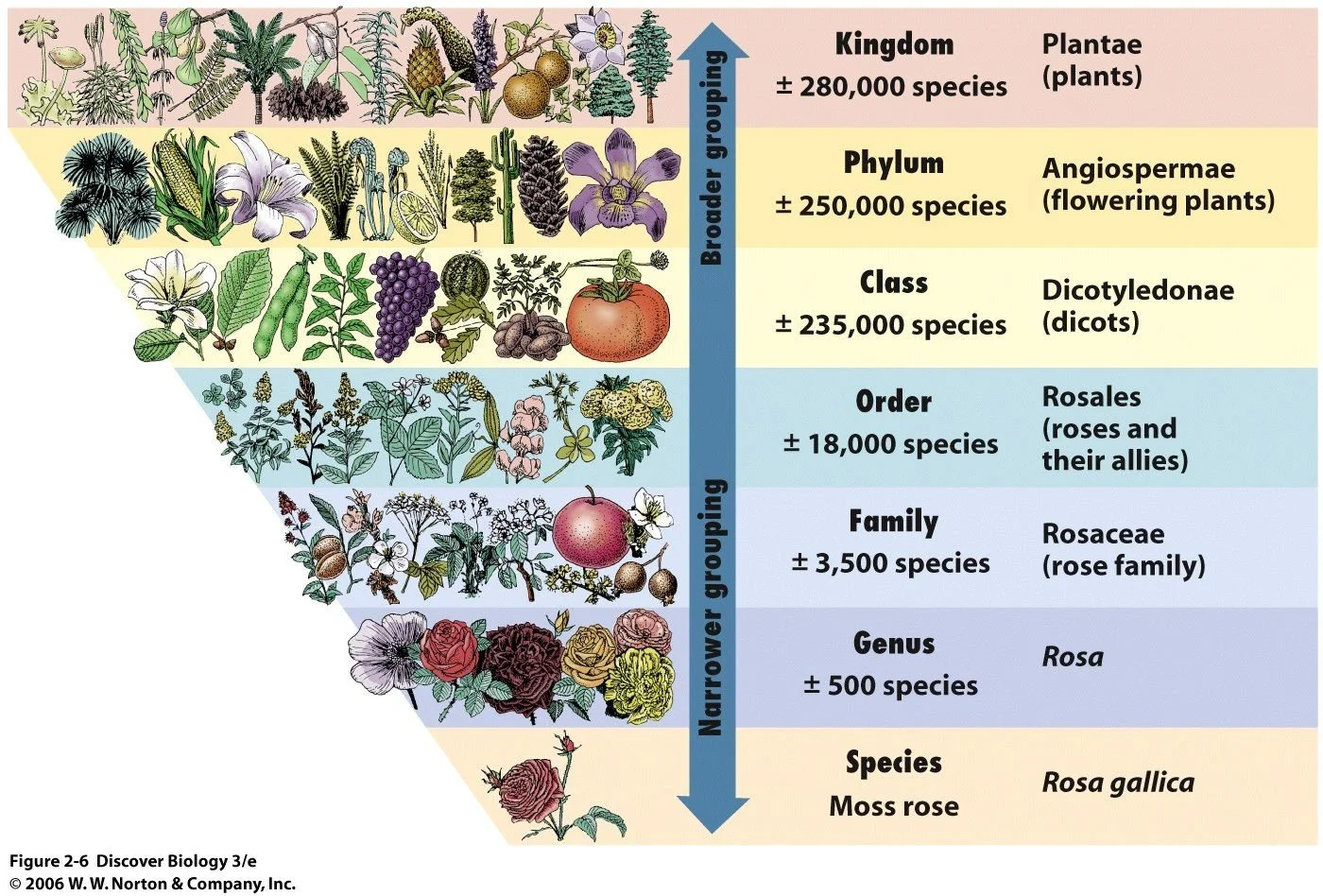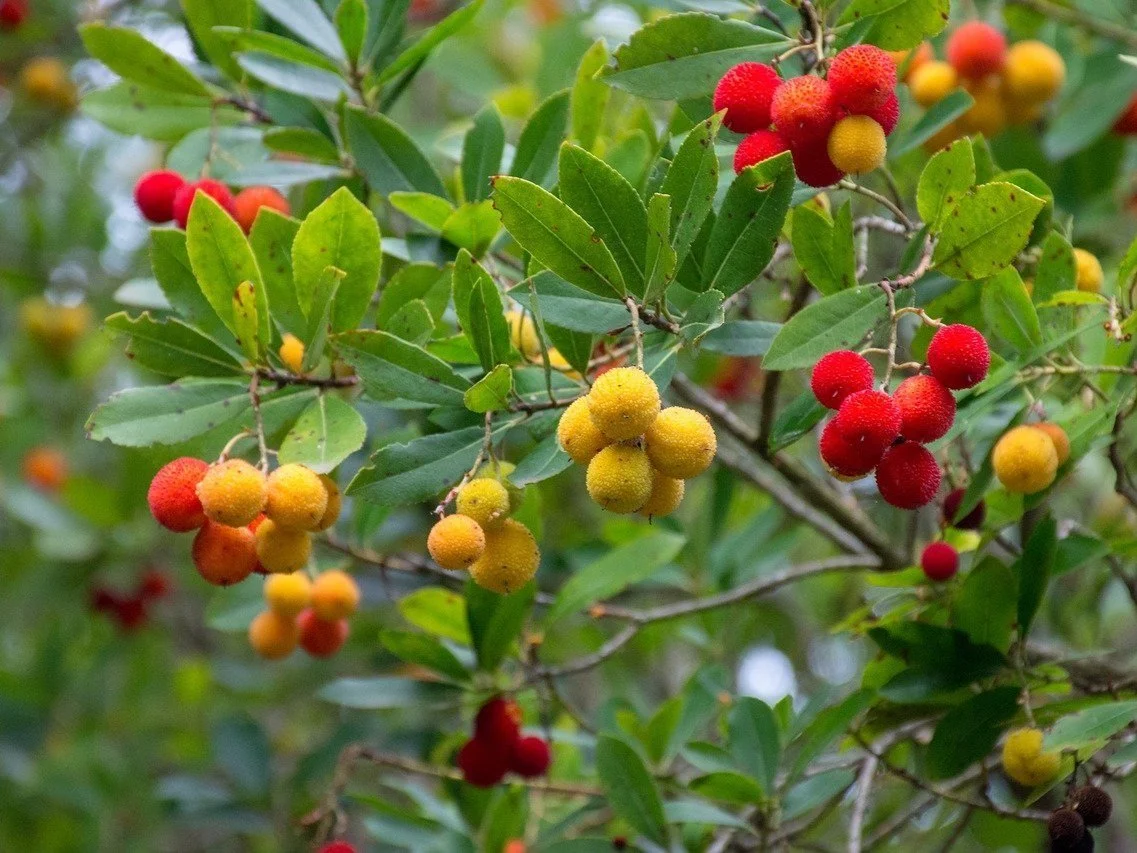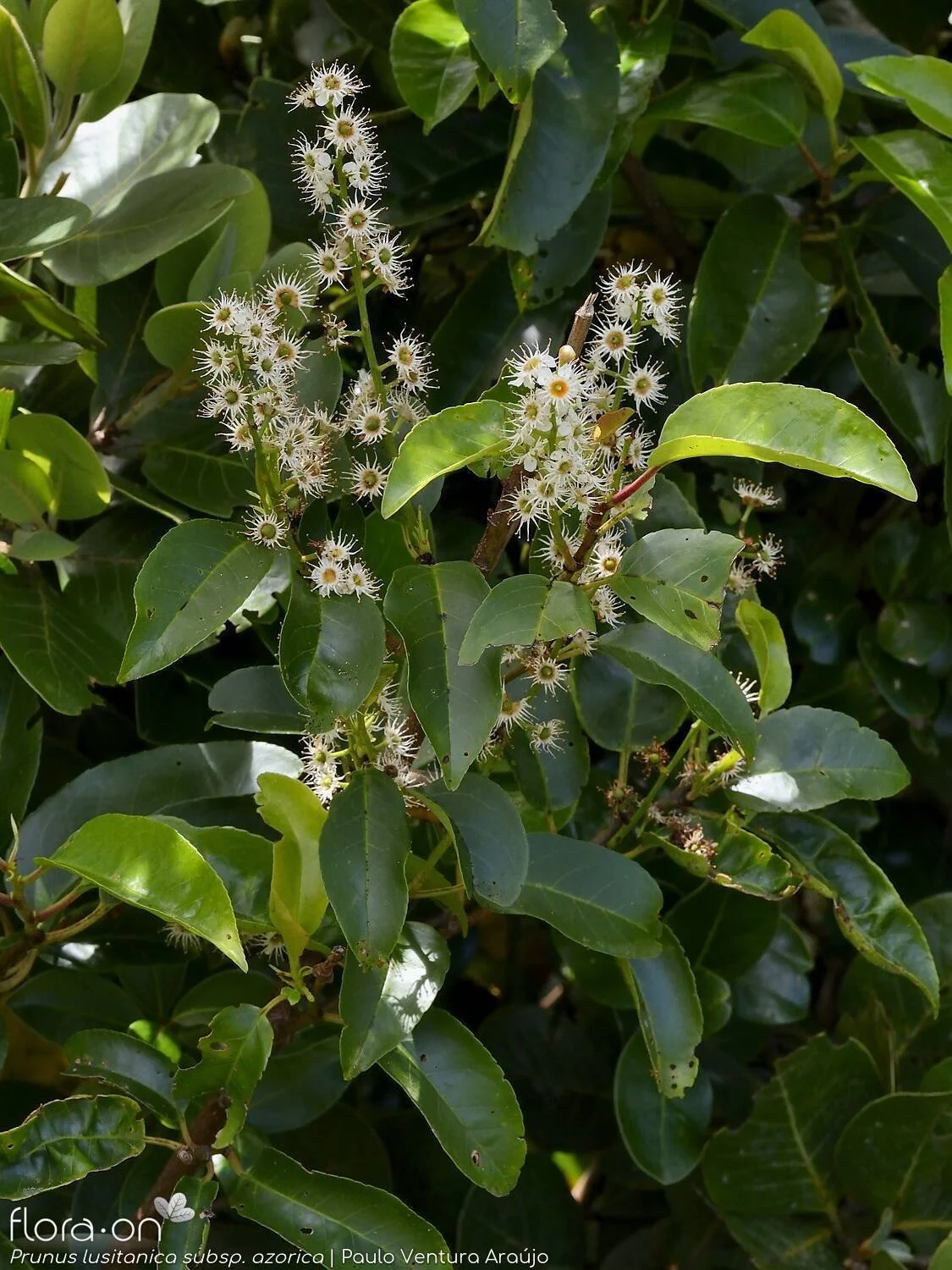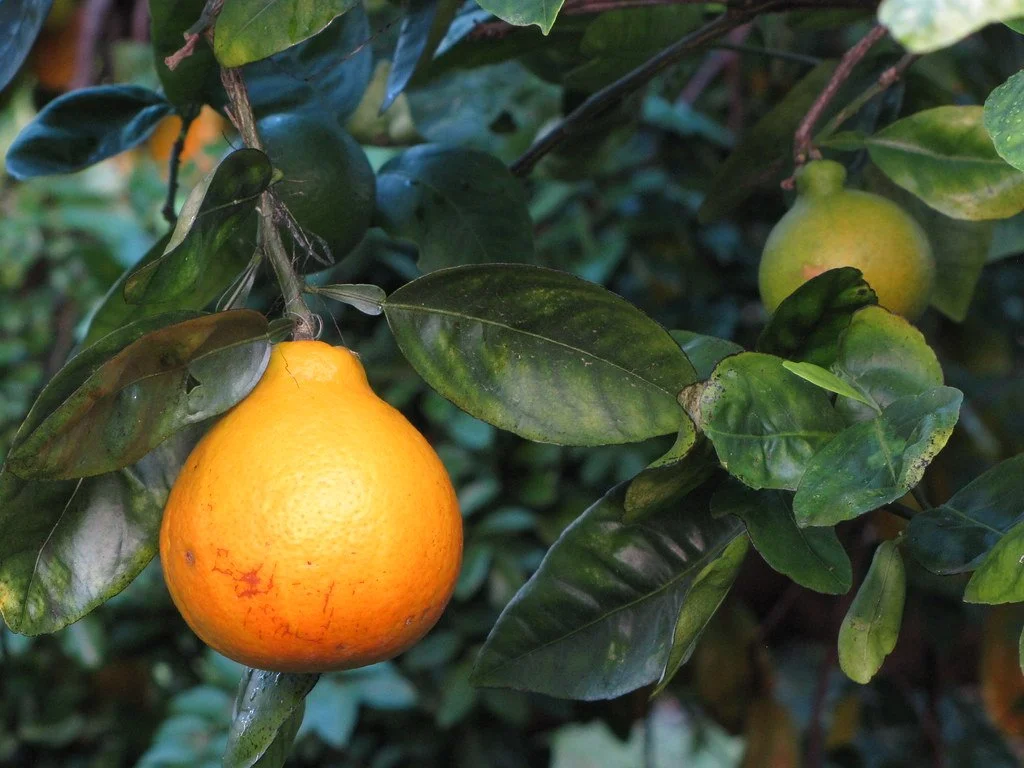This is an adapted version of an article
written by Sandrine Jonchère - Choffel,
founder of Rayon de Serre nursery:
"What do the botanical terms mean?"
Fruit Trees & Botanical Names
“Without names, there can be no permanent knowledge.”
Botany is the science of plants. So far, everyone agrees. But when you dive into plant names and botanical terms, everything can get a lot more complicated! When it comes to the classification and naming of a plant, it can be difficult to find your way through families, species, varieties, hybrids, uppercase and lowercase…
Let us help you see more clearly into this amazing green world.
The great family of plants …or is it a kingdom? 🤔
How many plants are there on Earth?
To date, 2 million animal and plant species have been recorded on Earth, and it is estimated that there are between 8 and 20 million depending on the source, so reasonably around 12 to 14 million. Many new species are discovered every year, thanks to the unstoppable progress in DNA sequencing and other science-aiding technologies which allow, among other things, to explore the seas and oceans more deeply than ever before.
In terms of plant life, it is estimated that there are around 350,000 flowering plants — the most numerous — as well as 1,000 species of conifers, 13,000 species of ferns and 20,000 species of mosses and the like.
Between all these, the Plants For A Future website estimates that there are over 20,000 edible plant species in the world!
Fruit of the Acca sellowiana, or feijoa
Milan NEPALI working on the plant ID for Adansonia digitata, the African baobab tree
Where do plant names come from?
In many cases, the names given to plants come from the botanists who first identified them. The delicious South American feijoa, Acca sellowiana, took its species name from the German botanist Friedrich Sello, while the famous baobab genus, Adansonia, was named after Michel Adanson.
But the characteristics of plants can also inspire the names that are attributed to them, such as the color of their flowers, the flowering season, the shape of their foliage, the originality of their silhouette, their propensity to attract pollinators, the texture of their stems… Likewise, the location where the plant originated from can also have influence (the loquat, Eriobotrya japonica, got its botanical name from Japan), as well as their edibility (many species feature the Latin word ‘edulis’) or even their sweet taste (‘dulcis’).
The names of plants can also be inspired by famous people, such as Washingtonia filifera, the California fan palm, whose genus owes its name to the USA’s first president, George Washington.
Eriobotrya japonica (loquat) bearing fruit
The fruit of Prunus dulcis, or almond tree
How were plants studied across the centuries?
Humanity’s most simple forms of studying plants can be traced back to the Paleolithic era, around the time when hunter-gatherers started practicing the most primitive forms of agriculture. The first uses of herbal remedies probably started then, too.
However, a more exact starting point for botany as a science is usually associated with the work of Theophrastus (300 BC), who did the first efforts in categorizing plants into groups.
In the Middle Ages, the medicinal properties of plants gained a main importance. Then, they would only be seen in terms of their ability to heal people and were only considered as potential medicine providers. In fact, pretty much only medicinal plants were to be found in botanical writings of the time.
It is really only from the Renaissance onwards that plants as a whole are to become the subject of careful study, and so botany will finally become a science distinct from medicine. Greatly assisted by the invention of the microscope (1590s), the study and understanding of the physiological mechanisms specific to plants will not cease to advance, and neither did our discovery of these amazing organisms.
Nowadays, plants are regaining new interest through the combination of both botanical knowledge and the associated medicinal interest, by seeking and rediscovering the traditional uses that brought many benefits to indigenous populations. As further advances in research come to light, so does plants’ importance within the ecology and the biodiversity of our planet and the importance to preserve them…
How did the classification of plants come about?
Plants were first classified in the most visual and simple way: by their size. Then, certain parts of them, notably their fruits and reproductive organs, were taken into consideration to further clarify these classifications.
As the knowledge of plant physiology and plant anatomy developed, these beings were better understood, and a tendency was born to think of plants — and thus classify them — not in terms of form, but in terms of function.
In the eighteenth century, the Swedish biologist and physician Carl Linnaeus (1707 – 1778) proposed to name each plant using what would become the universal binomial nomenclature system we still use today: the name of the genus beginning with a capital letter (e.g. Ceratonia) supplemented by its specific epithet written in lower case (e.g. siliqua). The association of these two Latin words constituted the name of the species (e.g. Ceratonia siliqua) which became, by convention, written in italics in order to distinguish it from the vernacular names given to the species (e.g. Carob tree).
Cinnamomum camphora, or camphor tree, also very medicinal
The leaves of Cnidoscolus aconitifolius or chaya
Plant classification and botanical terms
The Linnaean taxonomy
Over time, the classification system evolved, coming to reflect evolutionary relationships between organisms, but the naming structure created by Linnaeus still remains in use. Said classification system is broken down into 7 main groups, or taxa, with each higher ‘rank’ including the lower ones underneath:
Botanical taxonomy, the example of the moss rose (Rosa gallica)
Numbers of species shown are from 2006 and have since grown quite a bit
The kingdom (for plants, this is of course the plant kingdom, or Plantae)
The phylum
The class
The order
The family
The genus
The species
Let’s now focus a bit on the lower levels of this classification system…
Family
The botanical family is a classification that usually brings together plants that look alike and that share common genes, since they are descended from the same ancestors. What is more useful to gardeners, orchardists or other plant growers is that they might also show similar behaviours or preferences when it comes to growing conditions. Recent advances in DNA are helping to refine these family groupings further.
Traditionally, botanical family names are based on a well-known genus within the family, and as a rule end in “-aceae”. Take the example of the strawberry tree, which is part of the Ericaceae family, named after the genus Erica, which includes many heather species. Plants in this family can usually tolerate acidic, infertile soils, and tend to build mycorrhizal associations to compensate for this.
Genus and species
Strawberry tree (Arbutus unedo) covered in fruit. The genus Arbutus belongs to the family Ericaceae
A genus groups one or more species of related plants, which usually (but not always!) share a number of common physical attributes. It is written in Latin, in italics, starting with a capital letter.
According to botanical nomenclature conventions, in order to designate a plant species we start by writing its genus, and then a term which defines the species itself. As mentioned earlier, this term is called a “specific epithet”, and it is many times an adjective which describes the plant in some way. The specific epithet is attached to the genus, and it is also written in Latin and italics, but all in lowercase.
Going back to our example of the species we know by the common name ‘strawberry tree’, it is defined by the botanical name Arbutus unedo, where Arbutus represents its genus and unedo its specific epithet. This name is attributed to Pliny the Elder, who said unum tantum edo (Latin), meaning “I eat only one”, perhaps in reference to the fruit’s alcoholic content.
It is important to note that plants of the same species can reproduce amongst themselves, but cannot reproduce with members of other species. Their unique genetic characteristics are therefore reproduced identically from generation to generation. This is what defines a species.
Subspecies, varieties, cultivars and hybrids
In addition to the taxa and botanical designations of genus and species, additional levels of detail can be added. These are the main subdivisions:
Prunus lusitanica subsp. azorica, a Portuguese laurel found in the Azores islands
subspecies
A subspecies presents a morphological or genetic variation compared to its species, usually occurring spontaneously as a result of its presence in different geographical areas.
It is designated by the indication “ssp.” (or “subsp.”) in lower case followed by the name of the subspecies in lowercase italics.
For example, the Portuguese laurel found in the Azores is called Prunus lusitanica ssp. azorica.
variety
Botanical varieties allow us to differentiate populations and individuals which show naturally occurring distinct characteristics within one same species or subspecies, independent of geographical distribution. They are written after the genus and specific epithet, and identified by the abbreviation “var.” followed by the name of the variety in italics and lowercase.
An example is Juglans ailantifolia var. cordiformis, also known as the Japanese walnut, a heart-shaped nut.
cultivar
As its name indicates, the cultivar designates a cultivated variety, or a plant obtained via horticultural selection. So, contrary to a variety, cultivars result from cultivation by plant breeders.
A cultivar name appears between single quotation marks, in a capitalized form, after the species name. Most times, it is the family name of the inventor of the cultivar in question, as in Rubus 'Betty Ashburner', the groundcover raspberry.
Citrus × tangelo, a hybrid resulting from a cross between Citrus × paradisi and Citrus reticulata. Photo: Forest and Kim Starr (Flickr)
hybrid
A hybrid is the result of a cross between different species within the same genus or across different genera. They can be natural or intentionally manufactured by man.
They are designated by a multiplication sign “×” (not the letter “x”), which is placed either in front of the genus if it is a hybridization of genera, or in front of the species if it is a hybridization of species in the same genus.
As an example, the tangelo, Citrus × tangelo, is a citrus fruit resulting from the hybridization of Citrus × paradisi (the grapefruit) and Citrus reticulata (the mandarin).
..and we will leave the subject at that today.
Botanical classifications help us understanding (and working with) the biodiversity around us.
They are forever flowing and changing, thanks to DNA research, which is always expanding our knowledge of plants and other living organisms.
Various Arecaceae family plants
This article was compiled by Miguel COTTON & Miguel PEREIRA. If you have any questions or suggestions, do not hesitate to contact us. miguel@orchardofflavours.com






